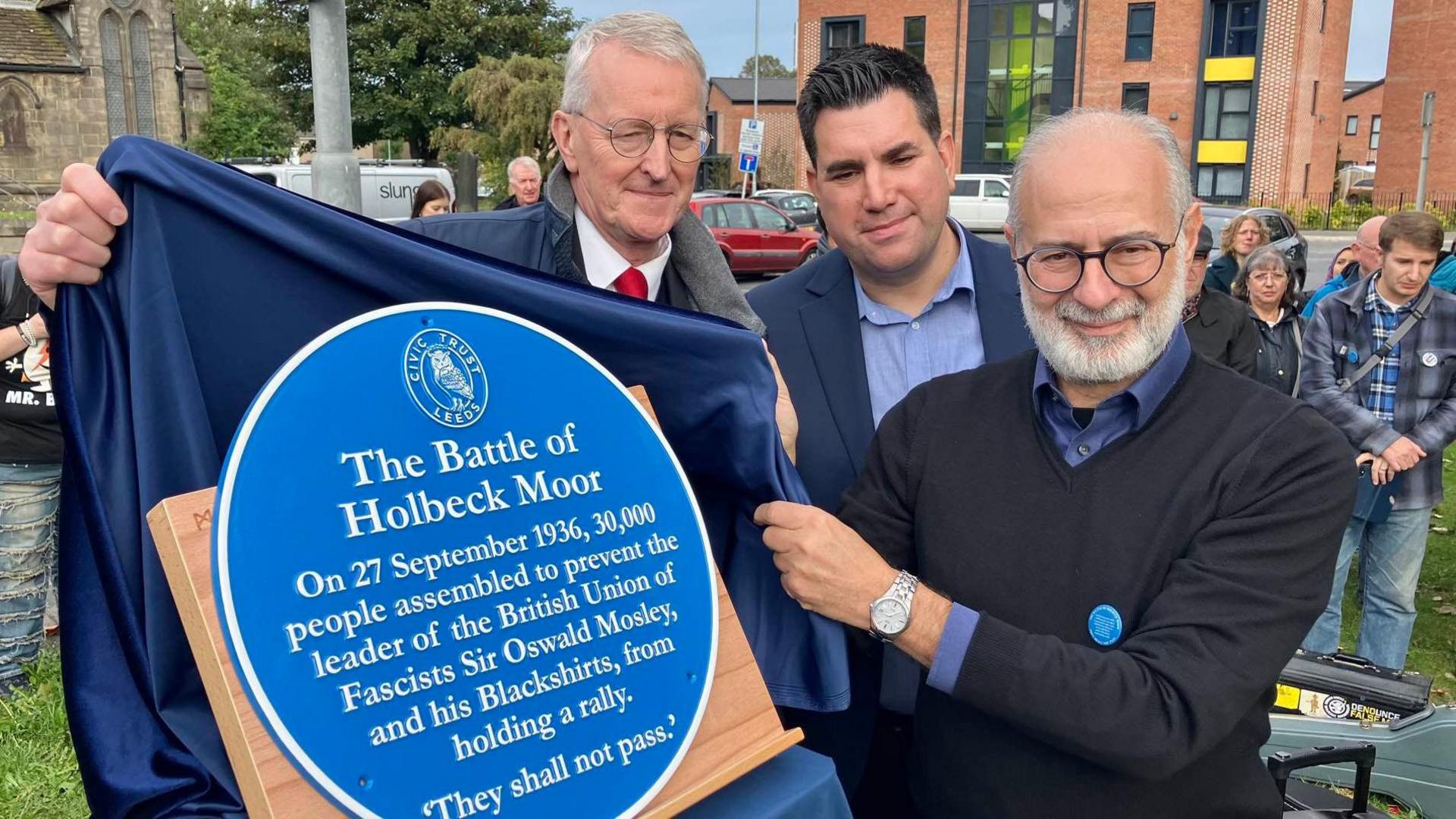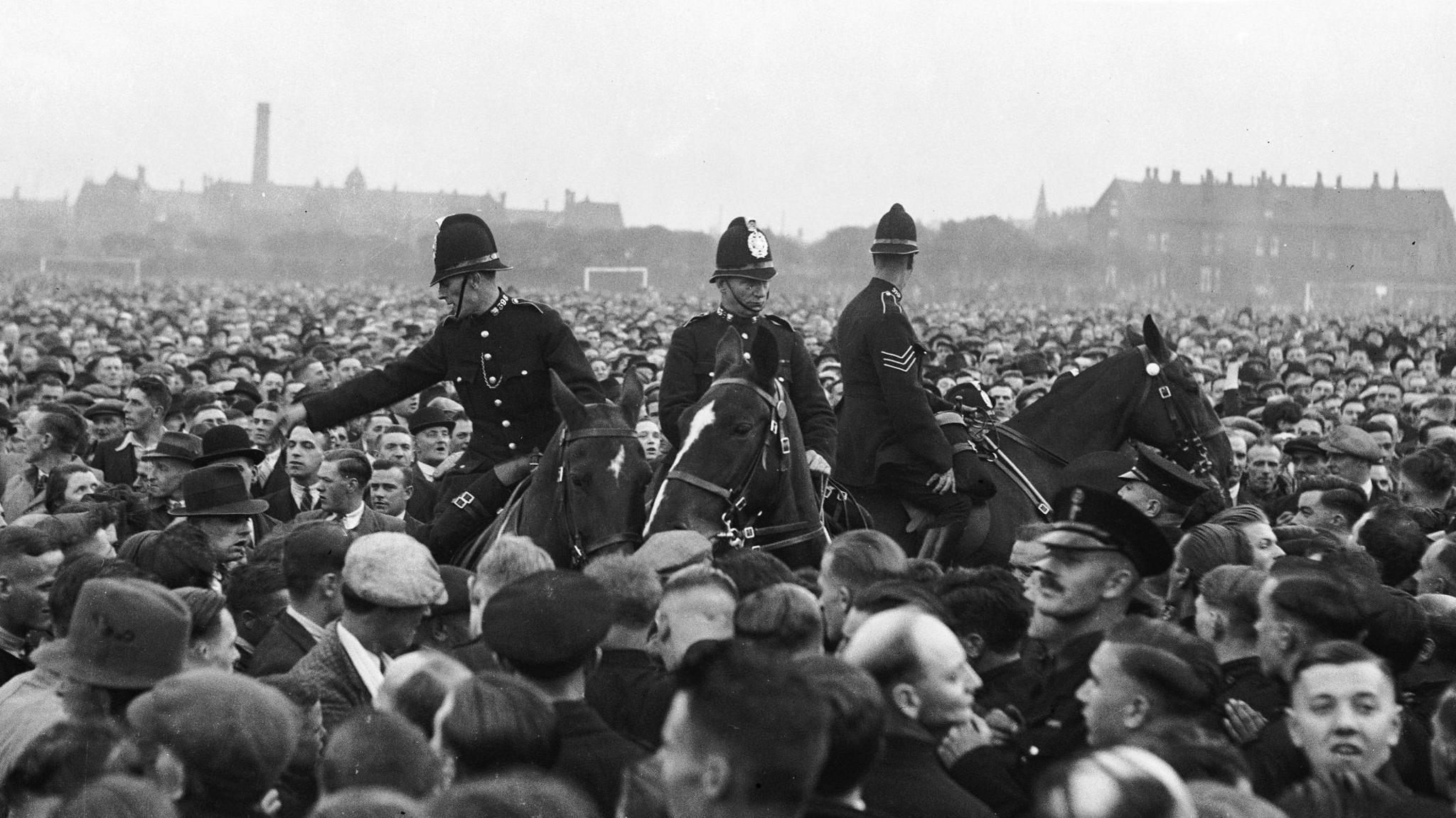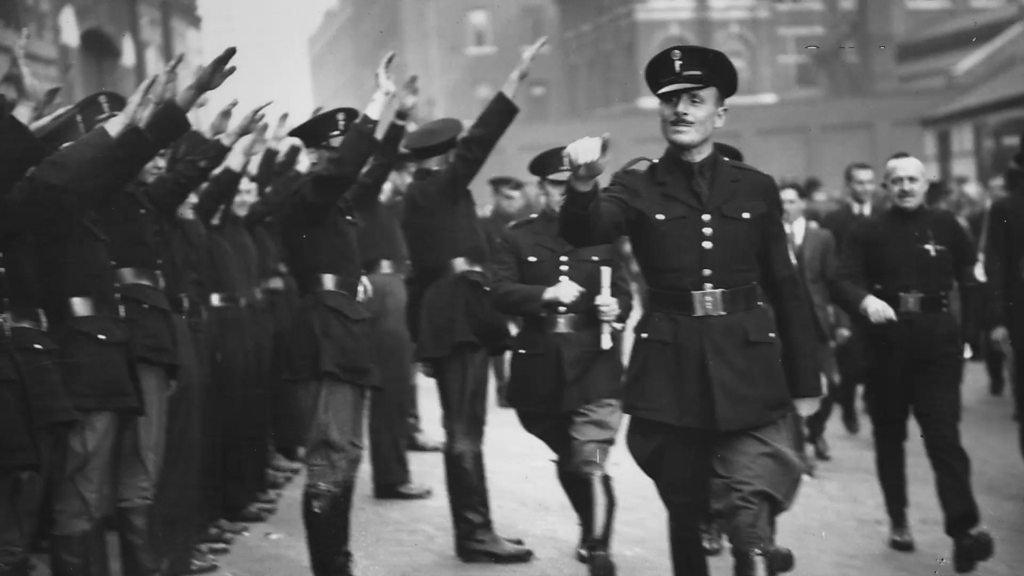Blue plaque to mark city's anti-fascist ‘battle’

The ceremony was attended by Leeds MPs Hilary Benn, Richard Burgon and Fabian Hamilton
- Published
A blue plaque has been unveiled to mark a city’s “anti-fascist heritage”.
Leeds Civic Trust and Stand Up To Racism created the plaque to mark 88 years since the Battle of Holbeck Moor.
Far-right leader Oswald Mosley and 1,000 of his supporters visited Leeds on 27 September 1936, but were met by a crowd of 30,000 anti-fascists who disrupted the rally.
Martin Hamilton, director of Leeds Civic Trust, said the plaque was important “because of what it says about the people of Leeds”.
He said: “When we consider blue plaques, we don’t just think about what happened at the time but also the relevance to the present time.
"We see extremism of all forms in the country at the moment.
"So maybe it will give people cause to think about what’s happening today.”
The plaque has been placed on St Matthew’s Church and celebrations included blue plaque cupcakes.
The unveiling was attended by Leeds South MP Hilary Benn, Leeds North East MP Fabian Hamilton and relatives of people who were at the rally.
Sam Kirk from Stand Up To Racism said the group had been overwhelmed with the enthusiasm from fundraisers.
It crowdfunded £850 for the plaque, with more than 60 supporters.
She added it had been "amazing" to see how many people had passed stories of the events at the moor through the family.
She said: "One guy, his grandfather walked from Batley. And one woman walked from Wortley.
"There was a real range of ages too.
"There were men and women and young people. It wasn’t just men in their 30s and 40s."

A crowd of 30,000 protestors disrupted the rally led by Oswald Mosely
Battle of Holbeck Moor
Mosley and the British Union of Fascists marched from Calverley Street in the centre of Leeds to Holbeck Moor.
They had planned to demonstrate through the city’s Leylands Jewish quarter – but Leeds City Watch Committee forbid the route due to fears it would cause antisemitic rioting.
Protests quickly became violent and, according to the Leeds Mercury newspaper, Mosley was among demonstrators who were hit by stones during the battle.
Mr Hamilton said the Civic Trust felt it was a “really important moment in the city’s history”.
He said: “It took place as Hitler started to invade other parts of Europe and without events like the Battle of Holbeck Moor, it could have potentially resulted to a similar thing happening here in the UK.
"It’s about people in Leeds opposing that."
Ms Kirk said the plaque was a reminder of the dangers of extremism.
She said: "It is reminiscent of what we’ve seen in the UK.
"People are trying to bring the far right together... But we don’t want a return to the 1930s or the 40s, the politics of hate is not what people want."
The plaque will mirror similar ones that mark the Battle of Cable Street in east London and the Battle of Stockton in Stockton-on-Tees.
Ms Kirk said: "The wording on the plaque links them all together and that is ‘they shall not pass’."
Leeds Civic Trust has been creating blue plaques for more than 30 years, but Mr Hamilton said they were rarely installed to mark events.
“They’re normally for people or buildings but it’s quite hard to find a suitable location for events. It’s unusual to commemorate a rally,” he said.
Listen to highlights from West Yorkshire on BBC Sounds, catch up with the latest episode of Look North or tell us a story you think we should be covering here, external.
Related topics
- Published5 October 2016
